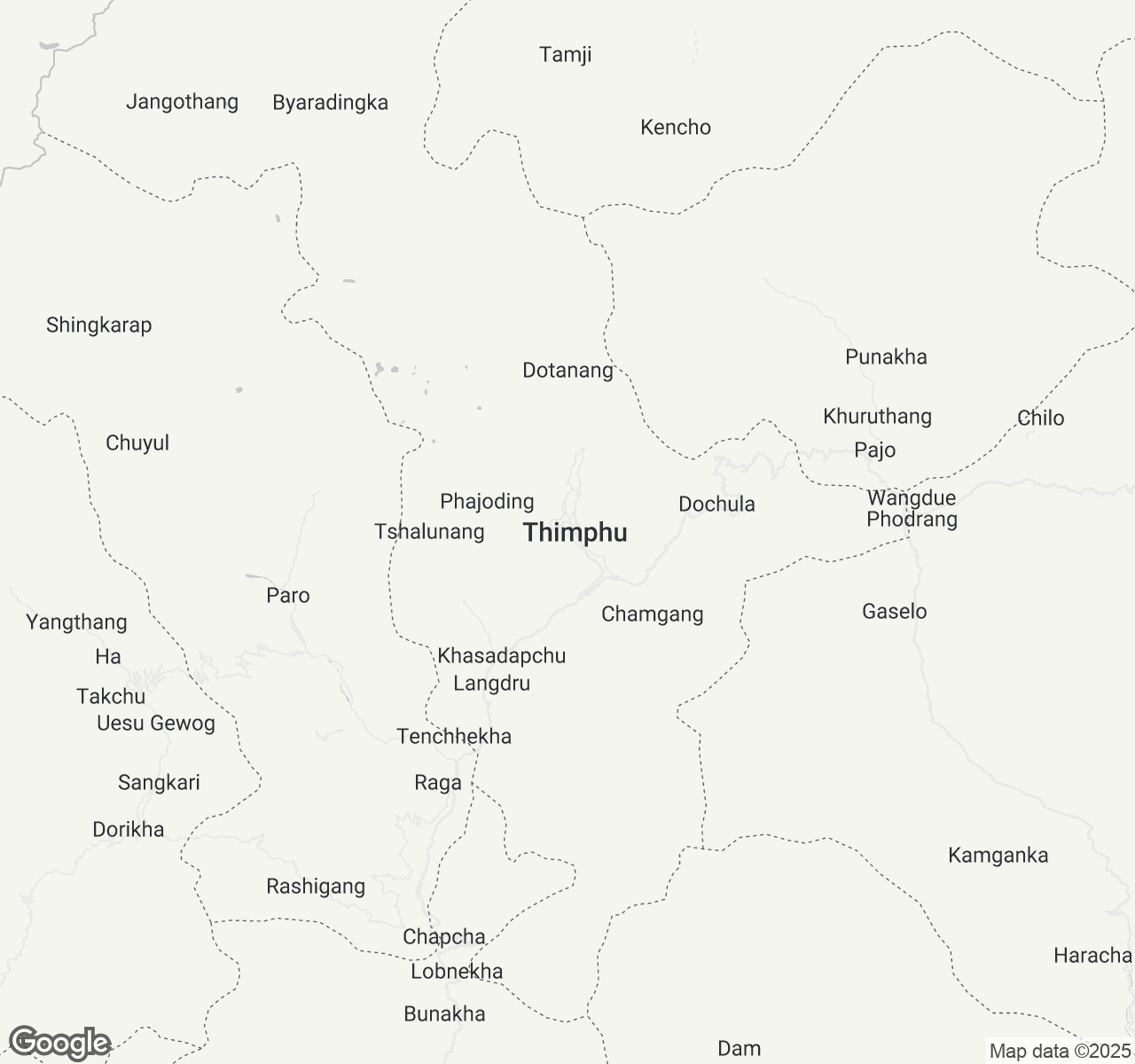
Things to Do in Thimphu
Discover the best of Thimphu
Plan Your Trip
Essential guides for timing and budgeting
Top Things to Do in Thimphu
Discover the best activities and experiences. Book now with our trusted partners and enjoy hassle-free adventures.
Your Guide to Thimphu
About Thimphu
located in the heart of the Himalayas at 7,710 feet, Thimphu defies every expectation of a capital city. Here, crimson-robed monks navigate streets alongside civil servants in traditional ghos, while prayer flags flutter against a backdrop of snow-capped peaks. This is a place where ancient dzongs stand sentinel over valleys dotted with chili-drying rooftops, and the gentle hum of prayer wheels mingles with the distant call of temple horns. Thimphu embodies Bhutan's philosophy of Gross National Happiness—you'll feel it in the unhurried pace of weekend markets overflowing with yak cheese and handwoven textiles, in the reverent silence of monasteries where butter lamps cast dancing shadows, and in the genuine warmth of locals who measure wealth not in currency but in contentment. This is a city that whispers rather than shouts, where modernity wears the gentle mask of tradition, creating an atmosphere that feels both timeless and tenderly preserved.
Travel Tips
Transportation: Book taxis through your hotel or use the official Thimphu taxi service (white vehicles with red stripes). Negotiate fares beforehand—expect 300-500 ngultrum for city trips. Walking is ideal for central areas, but altitude may cause breathlessness initially.
Money: Carry Indian rupees or exchange USD at Bank of Bhutan branches. ATMs accept international cards but often run empty. Budget 2,000-3,000 ngultrum daily. Credit cards work only at upscale hotels and some restaurants.
Cultural Respect: Remove shoes before entering temples and dzongs. Walk clockwise around religious structures. Don't point feet toward altars. Dress modestly—long pants and sleeves required for religious sites. Photography inside temples is strictly prohibited.
Food Safety: Stick to bottled water and avoid raw vegetables at street stalls. Try ema datshi (chilies with cheese) at established restaurants. Local restaurants like Zombala2 and Cloud9 offer safe, authentic cuisine. Carry antacids—Bhutanese food is notoriously spicy.
When to Visit
Thimphu's climate varies dramatically by season, each offering distinct advantages.Spring (March-May)brings mild temperatures (15-20°C/59-68°F), blooming rhododendrons, and minimal rainfall (50-80mm monthly). This peak season sees 30-40% higher accommodation rates.Summer (June-August)features monsoon rains (200-300mm monthly) with temperatures reaching 24°C/75°F. Expect 20-25% lower prices but frequent afternoon showers and cloudy mountain views.Autumn (September-November)delivers perfect weather—clear skies, comfortable temperatures (10-20°C/50-68°F), and minimal precipitation (30-50mm). Peak season pricing applies, but visibility of Himalayan peaks is unmatched.Winter (December-February)brings crisp, dry conditions with temperatures dropping to -2°C/28°F at night, rising to 15°C/59°F during sunny days. Accommodation rates drop 25-35%, making it ideal for budget travelers. Key festivals include Thimphu Tshechu (September/October dates vary by lunar calendar) and Winter Solstice celebrations (December 21-22). Photography enthusiasts should visit October-November for crystal-clear mountain vistas, while culture seekers should time visits around festival dates. Families with children should avoid monsoon months due to transportation delays.

Thimphu location map